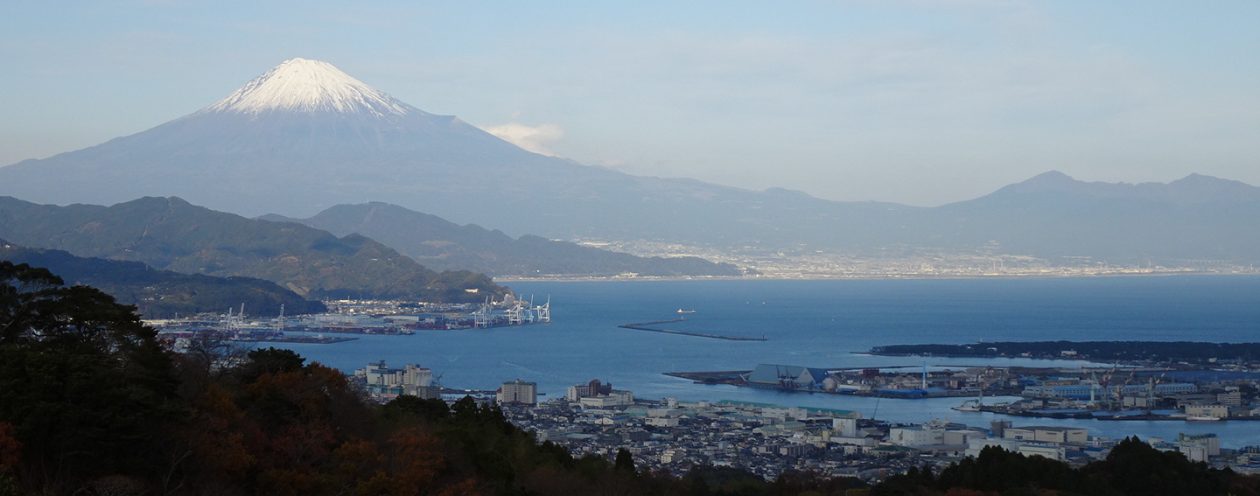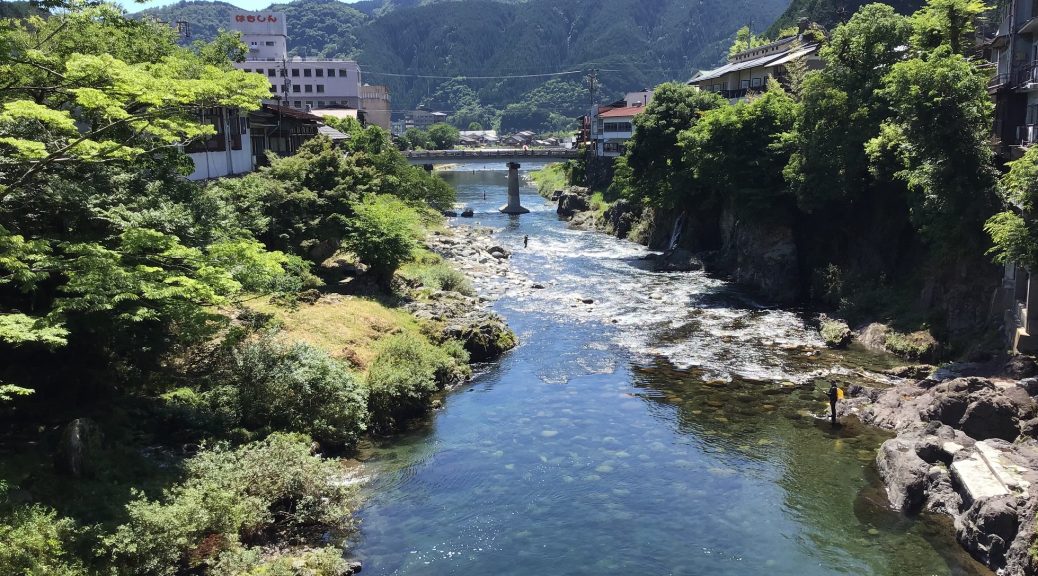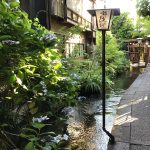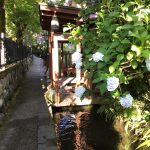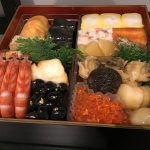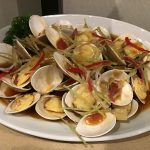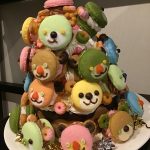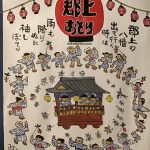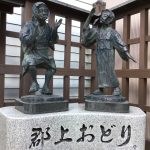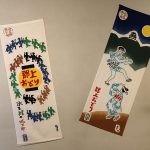G-91 Gujo-Hachiman
The town for clean pure water
Gujo Hachiman is famous throughout Japan for its pristine rivers, water springs, and for maintaining traditional ecological practices that have kept the water running through the town exceptionally clean for centuries.
Visitors come to Gujo Hachiman from all over Japan to enjoy the pure mineral water that flows from every tap in town!
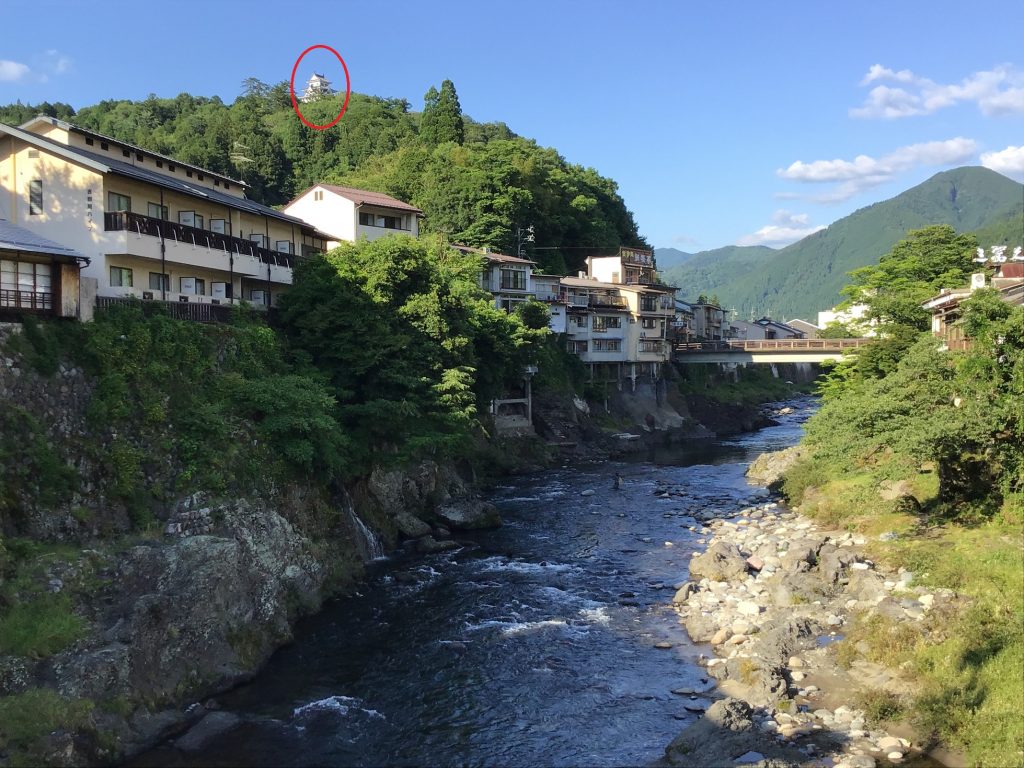
Sogi Sui Water Shrine
Sogi Sui water spring is the famous site and shrine where fifteenth century poet Sogi and local feudal lord To Tsuneyori exchanged farewell poems when the poet returned to Kyoto after visiting Gujo Hachiman.
The water spring and small shrine are recognized by the Japanese Ministry of Environment for both ecological and historical significance.
This shrine is extremely popular with Japanese visitors. It features an elongated mizu fune supplied from the natural spring underneath the small shrine building. The lower basins of the mizu fune are often used in the summer by tourists and locals to cool bottled drinks and watermelons.
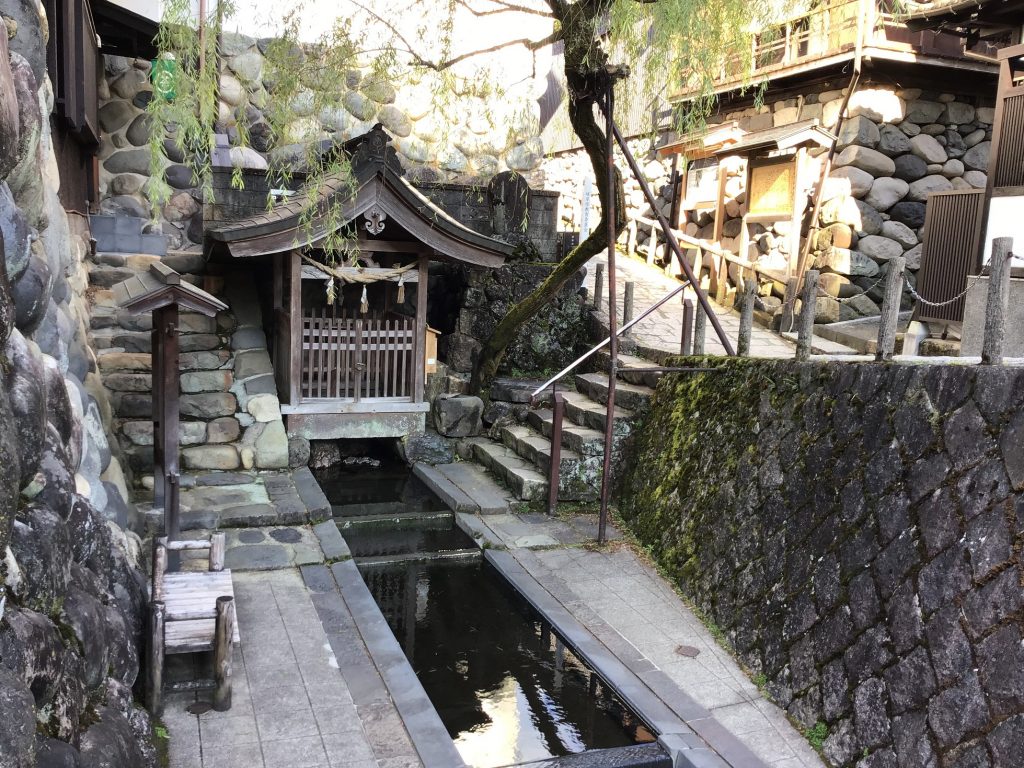
Igawa Komichi
Water diverted upstream from the Yoshida River follows a small canal on its journey to the small streetside water canals on the south side of the town. Igawa Ko Michi follows the length of this canal offering a peaceful place to walk and enjoy unique views of daily town life.
Well fed coi fish call this canal home and are regularly fed by visitors and locals alike. These fish will often congregate near people standing along the canal, as if begging to be fed.
Castle Town
Gujo Hachiman is first and foremost a castle town. Gujo Hachiman castle has played a significant role in the town’s history, and its fortunes over the past five hundred years.
The presence of a castle, and local feudal lord, made Gujo Hachiman a local centre of finance, politics and trade. This contributed significantly to the wealth of the town’s inhabitants, and in turn attracted artists, craftsmen, and others of note to visit, and in some cases stay.
At the end of the Edo period, Lord Aoyama came to Gujo Hachiman from Kyoto. He brought with him many traditions, customs and practices, including culture and architecture, from what was and still is the cultural heart of Japan. You can still hear a little bit of Kyoto today, such as when locals use “okini” to say thank-you instead of “arigato”; and you can still get a taste 17th century Kyoto if you buy some “nikke dama”, hard cinnamon candies made locally and sold in different stores around town.
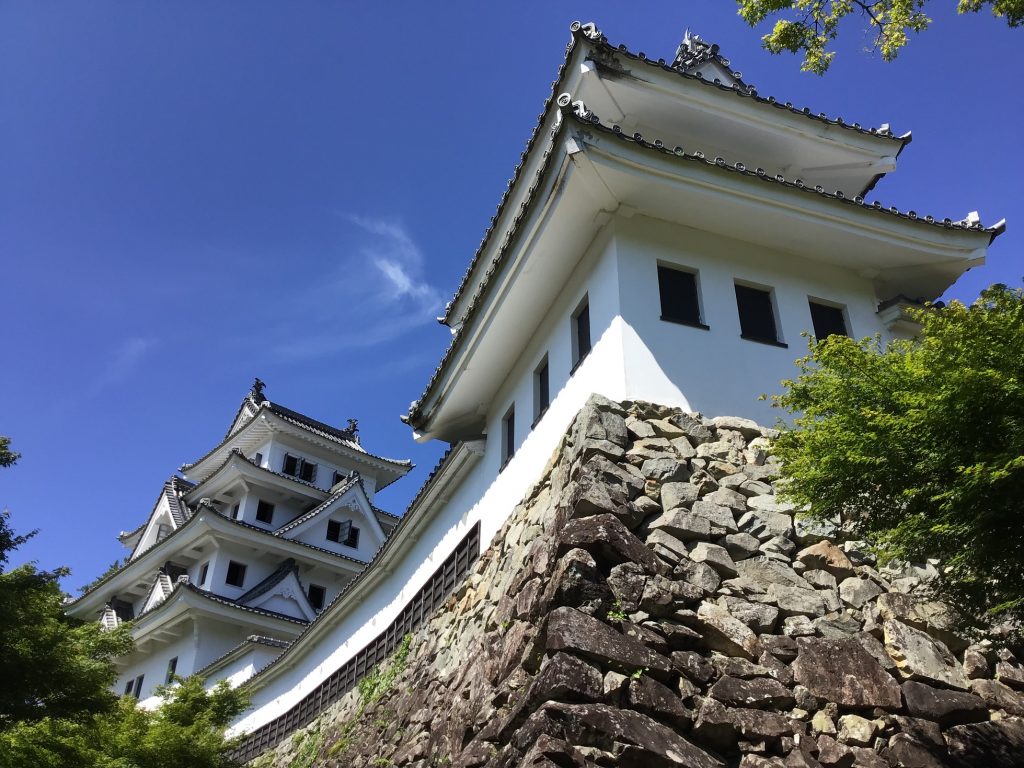
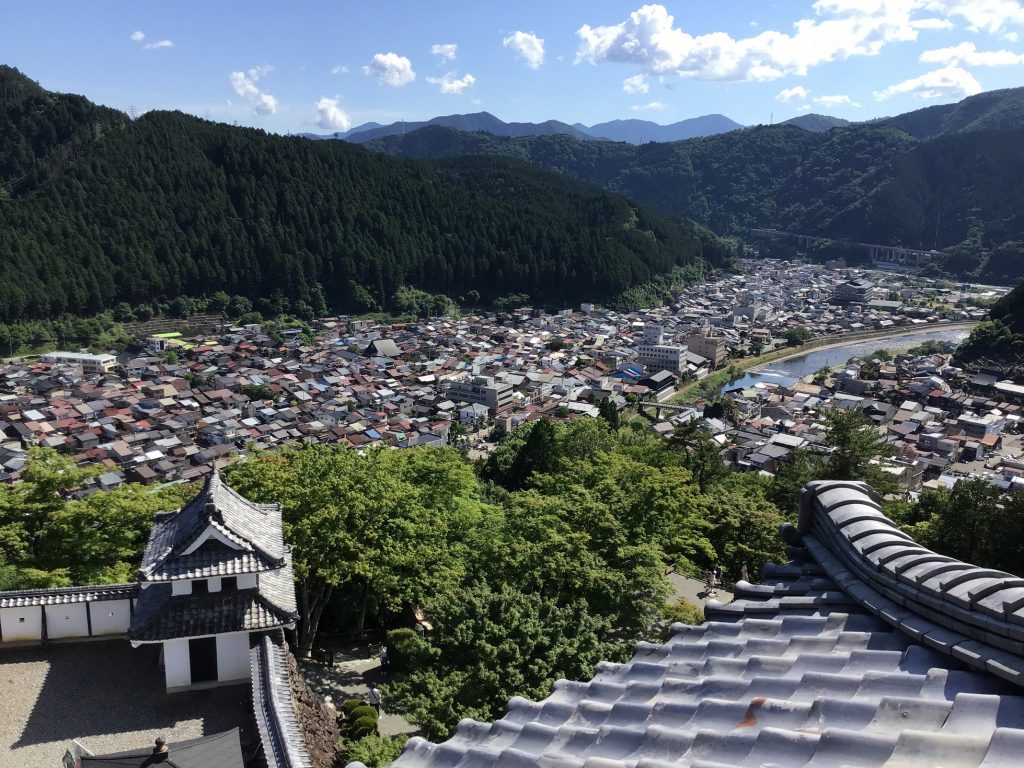

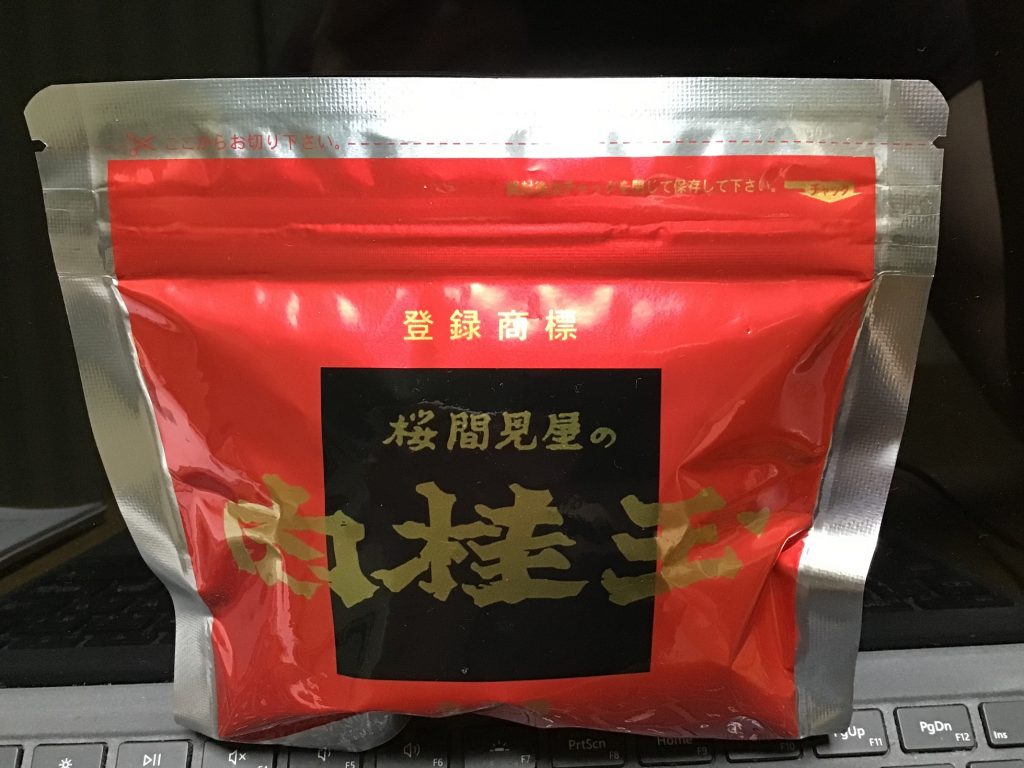
Town scape
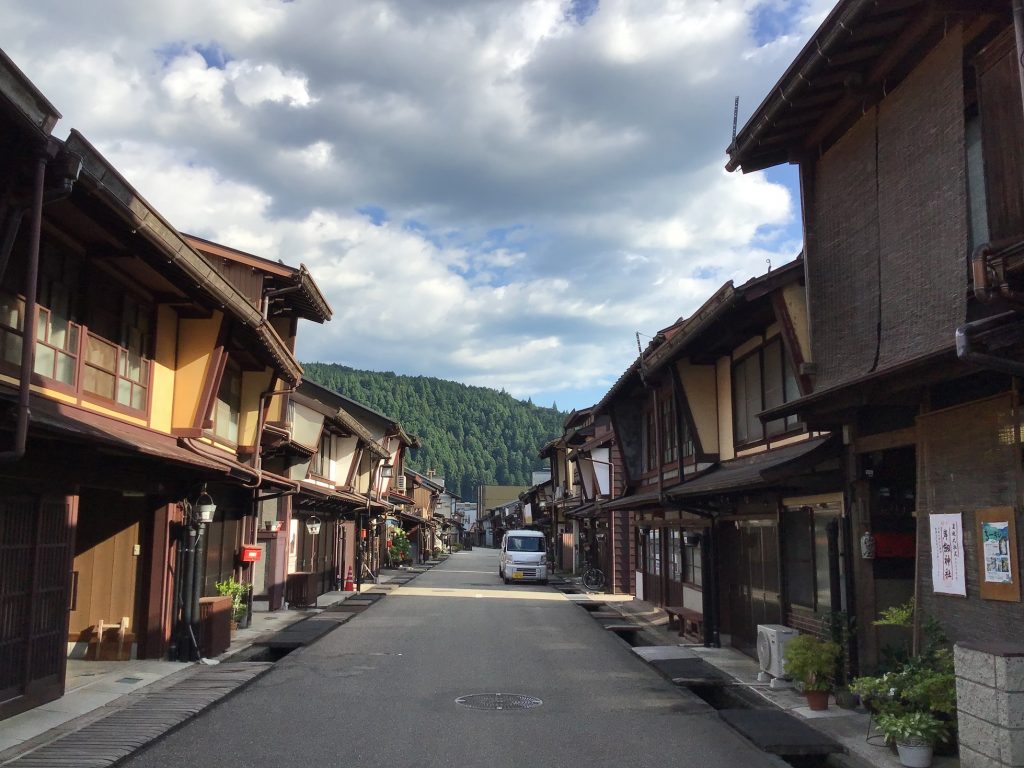
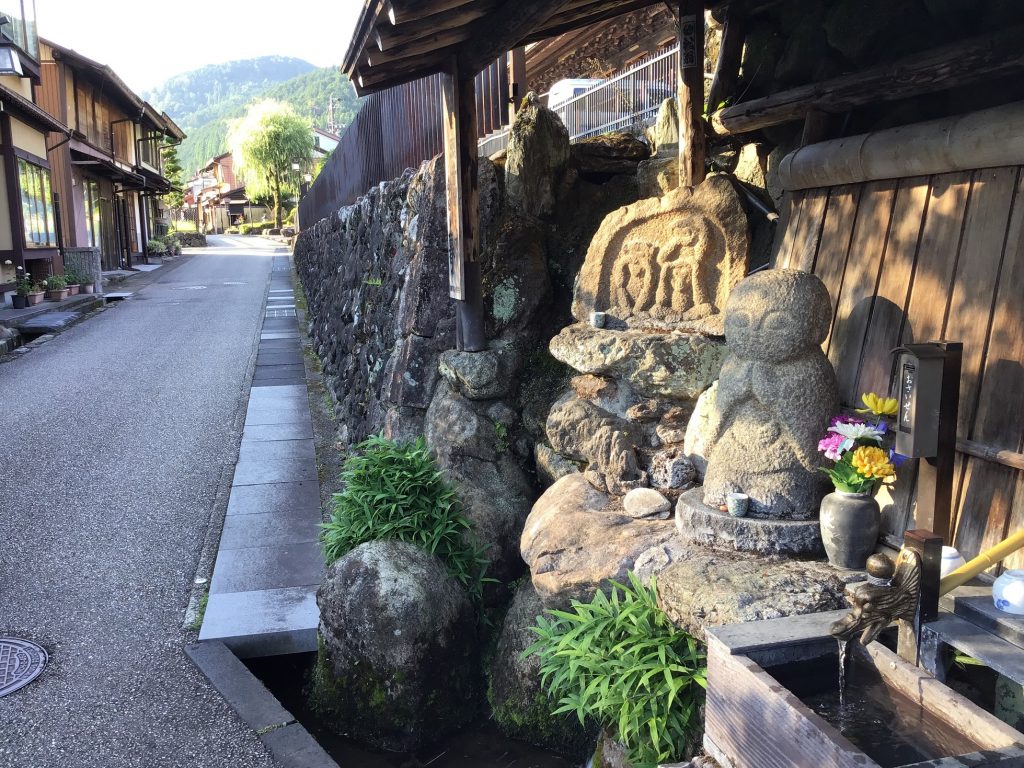
Food Replica Workshops
Few people know that the ubiquitous plastic food replica, seen in front of practically every restaurant in Japan, was invented in Gujo Hachiman. This tradition continues today, with 70% of national production still done in Gujo Hachiman. Some of the large producers offer workshops open to tourists, and there are also a few outlet stores around town where tourist can buy pre-made souvenirs, and even a food-sample themed cafe where visitors can enjoy a coffee, tea or even (real) ice cream.
Gujo Odori (Dance Festival)
The Gujo Odori dance festival is one of the three most important traditional bon dance festivals in Japan, and it is also one of the most accessible. Already designated a Significant Intangible Cultural Folk Asset by the Japanese government, Gujo Odori was added to UNESCO’s Intangible Cultural Heritage List in late 2022.
Gujo Odori consists of ten dances and corresponding songs.
This festival has started in Edo Period over 400 years ago. This was an attempt to encourage all the town’s citizens to get together, regardless of social level or position. This spirit remains today as the heart and soul of this very popular summer bon dance festival.
Gujo Odori is always performed live by a small group of singers and musicians sitting in a small float located in the center of the dancing circle. The instruments used vary by song, and include the shamisen, bamboo flute, and taiko drum. The name of the song currently being performed is displayed on lit lanterns at the corners of the float. The singers and musicians will change over the course of an evening, and many have been playing and singing for many years.
Gujo Odori is typically held on over 30 festive nights, from mid-July until the first weekend in September, which is the longest “Bon Odori” festival in Japan.
Movie is source from YouTube STM4410
/// FIT package
We can arrange this tour for individual, family, or the small group, following to your designated date, through the year, especially summer time you can enjoy traditional festival.
/// Itinerary
10:15 Meet at JR or Meitetsu Gifu station, then guide takes you these area by express bus to Gujo Hachiman central area, and start walking
View Points on the Route
- Yoshida river and beautiful view
- Gujo Hachiman Castle
- Gujo Hachiman Museum (with dance festival experience)
- Yanagi machi street
- Kaji machi street
- Sogi Sui Water Shrine
- Igawa Komichi
- Food Replica Workshops
You can take lunch at the local diner restaurant aside the road.
16:00 Take a express bus to Gifu station
17:30 Return to Gifu station, then finish the tour.
Note:
If you’d like to attend the dance festival, you need to stay 1 night at this town, and the price is different from below list. Please ask us the price.
/// Price
| Number of Guests |
1 | 2 | 3 | 4-5 | 6 or more (Max 10) |
| Price / person (Yen) |
71,000 | 39,000 | 28,000 | 22,000 | 25,000 |
Price Include:
- Return fare of express bus from / to Gifu station
- English (or other languages) speaking guide
(English, Chinese, French, German, Italian, Spanish, Portuguese, Dutch, Russian, Thai) - Commission for arrangements
- Commission for settlements by credit card
- Consumption tax
Price Exclude:
- Entrance fee of each place, if necessary
- Transportation costs in the town, if necessary
- Transportation costs to the meeting place / ending place
- Accommodation costs
- Food and Beverage fee
- Souvenir fee / personal expenses
- Expenses for services not described in the itinerary
Regarding these standard courses, we can arrange the plan upon your request by adding / deleting destinations, and combining other courses before and after, making reservations of accommodation, transportation, restaurants, or event tickets, etc. Please contact us by all means.
Please see here for the arrangement fee.
ex.1 Arrangement for accommodation
Room charge 10,000yen(1night 1person) + Commission 1,650yen(incl. c-tax)=Total 11,650yen
ex.2 Arrangement for additional transportation
Super express train 20,000yen(1person) + Commission 3,300yen(incl. c-tax)=Total 23,300yen
/// Cancellation Policy
Cancellation Policy for this course;
| Days to Departure | Cancellation Charge |
| More than 31 days | 10,000JPY |
| 30-15 days | 50% of trip price, Min 10,000JPY |
| 14-8 days | 70% of trip price, Min 10,000JPY |
| 7 days or Less, No Show | 100% of trip price |
Please refer to “Price, Terms and Conditions” for other detailed regulations.
/// Application Form
Please select the course and fill in the below box;
/// Payment
Payment can be settled by credit card (Paypal or Stripe).
After your booking, we will send you an invoice, then after your payment by credit card, the booking would be completed.
/// Contact
If you have any questions or offer to book, please send an email. We welcome even little questions! Don’t hesitate, and see you in Japan!!
Contact us: info@i-travel-square.tokyo
